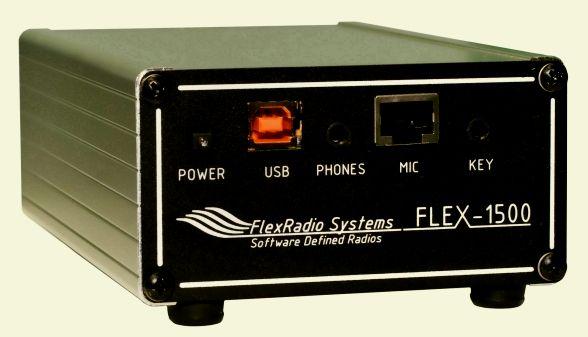
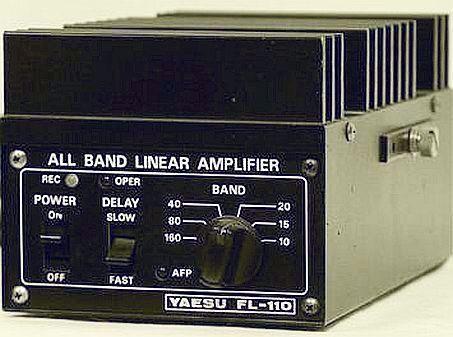
FLEX-1500 with modified YAESU FL-110 for 5 W drive


FLEX-1500 & YAESU FL-110
REDRAWN FL-110 SCHEMATIC
Over the years, FL-110 schematics have become a rarity and what's on the Internet are mostly vage images. That's why they were collected and after a few nights of hard work to decipher value and numbering of the components, a good readable design could be drawn.
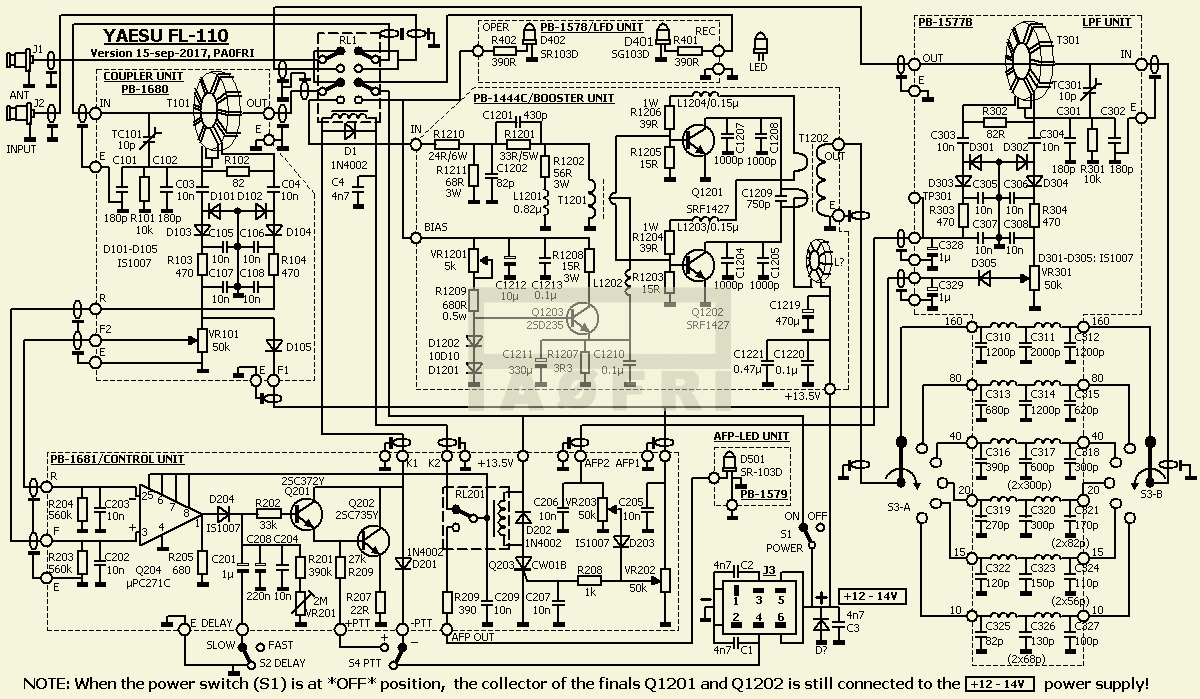
Corrections and additions are not excluded.
DESCRIPTION FL-110
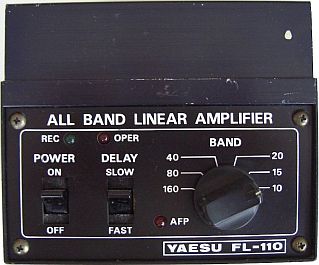

This pre-WARC 10 - 160 m band solid state all-mode linear power amplifier with low-pass filtering on six bands was produced for the Yaesu FT7 and FT310S/SD QRP transceivers. It operates on the 160, 80, 40, 30, 20, 17, 15, 12 and 10 meter amateur bands. Drive power is 15 watts CW/SSB, 4 watts AM/RTTY. Maximum input power of the finals is 200 W SSB/CW, 75 Ws RTTY and 50 W AM. The front panel has a DELAY switch to select FAST 0.1-0.2 seconds or SLOW 0.3-1.0 seconds to control carrier operated change over time. The rear panel has 50 ohm SO239 input and output jacks. This (120x100x200mm, 2.5 kg) device requires 13.5 VDC at about 17 A.
MODIFICATION FOR FLEX-1500
Decades ago I purchased my 2ndhand's FL-110 as spare, tested once for good operation and then no longer used. That changed when a FLEX-1500 came into my possession. Because this SDR transceiver delivers only about 5 W output, the PA appeared to be suited as amplifier.
Unfortunately, the original schematic can not be dug up so that the internet was consulted, but showed schematics are not clear. Anyway it is possible to recover a part of the circuit, but it turns out that the corresponding circuit in my unmodified FL-110 differs from the ''internet '' image.

After some experimentation, a suitable update was found by replacing the original 33 Ohm resistance with a 6.8 Ohm induction-free type. The obtained ouput with control from a FLEX-1500 is shown in the table. For the WARC segments LPFs of the next higher bands are used. Remarkable is that maximum output on 12 and 10 m were obtained with the 15 m band low-pass filter (LPF).
RELAY STEP-UP OR SPEED-UP FOR DECREASING PULL-IN TIME
 This in many magazines published simple design for increasing the relay pull-in time is often overlooked. This circuit works by using a short burst of a double supply voltage to move the contacts and then applies the original volts to the relay to lock the contacts in place.
This in many magazines published simple design for increasing the relay pull-in time is often overlooked. This circuit works by using a short burst of a double supply voltage to move the contacts and then applies the original volts to the relay to lock the contacts in place.
On receive the capacitor is charged to the supply voltage through both diodes. When switch (PTT) is pushed, the transistor turns on through 1 kΩ by the charged capacitor. Then the relay momentarily is supplied with about twice its voltage and closes faster than normal without harming the coil.
As soon as the capacitor discharges, the relay coil sees a normal supply voltage.

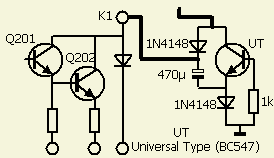 The system can be used in a FL-110, which makes the transmit/receive relay slightly faster. When the LPF PCB is folded up, on the lower print one can see a red-white wire from an upright pin to the relay. The wire is disconnected and solder to the relay accelerator. Then, according to the diagram (fig»), connect junction point of elco and diode to pin; further connected circuit to ground.
The system can be used in a FL-110, which makes the transmit/receive relay slightly faster. When the LPF PCB is folded up, on the lower print one can see a red-white wire from an upright pin to the relay. The wire is disconnected and solder to the relay accelerator. Then, according to the diagram (fig»), connect junction point of elco and diode to pin; further connected circuit to ground.
In summary, the relay accelerator is connected to:
1. the loosened red-white wire to the relay
2. the pin
3. mass
 This shows how K1 is used as central point for the installation. |
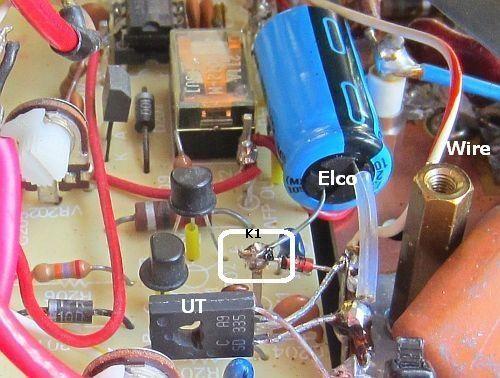 |